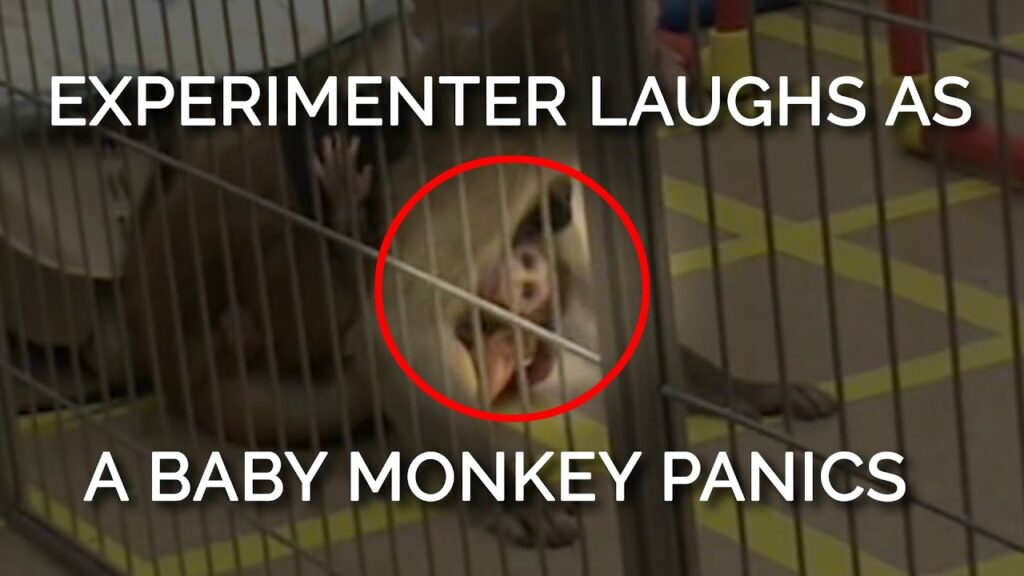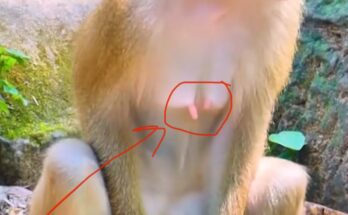
In a sterile laboratory far from the trees and sunlight of its natural home, a baby monkey trembled in a metal cage. Its tiny hands clutched the cold bars, its wide eyes darting back and forth in fear, searching for comfort that would never come. Moments earlier, it had been separated from its mother, torn from the only warmth and safety it had ever known. The separation wasn’t an accident. It was part of an experiment.
As the infant shrieked in panic—sharp, piercing cries that echoed down the linoleum hallway—a sound broke through the sterile silence: laughter. Not the soothing kind, not laughter born from joy or wonder, but a cold, dismissive chuckle. It came from one of the experimenters behind the glass.
To the baby monkey, there was no logic behind what was happening. There were no predators, no natural disaster, no visible danger. And yet, everything felt wrong. Its instincts screamed for its mother. It called out again and again, its voice breaking under the weight of fear. The response? More data scribbled on a clipboard—and another stifled laugh.
The scene, one of many in decades of controversial primate research, has haunted animal rights advocates and scientists alike. In the name of behavioral psychology and neuroscience, baby monkeys have long been subjected to tests designed to observe emotional distress, isolation, and fear. One infamous experiment placed young monkeys with inanimate “surrogate mothers” made of wire or cloth to study the nature of attachment. Others forced infants into total isolation for weeks, watching to see how long it took for them to break.
Some say the knowledge gained has contributed to our understanding of human development, mental illness, and trauma. But at what cost?
Witnesses who later came forward described not only the clinical cruelty of the experiments, but also the detachment—sometimes even amusement—of the researchers. In one account, the panicked cries of an infant monkey were met not with remorse or compassion, but with heartless laughter. The researcher reportedly remarked on the animal’s “dramatic performance,” as if the pain was theatrical.
To critics, moments like these represent the darkest side of science: when curiosity overrides compassion, when intellect disconnects from empathy. “These are not just data points. They are sentient beings experiencing real suffering,” said Dr. Anya Feldman, a former research assistant turned whistleblower. “When a baby cries, whether it’s human or not, we have a moral responsibility to respond—not to laugh.”
The baby monkey in that lab eventually stopped screaming. Whether from exhaustion, despair, or the numbing grip of trauma, no one knows. What is known is this: the silence that followed was not peace. It was surrender.


